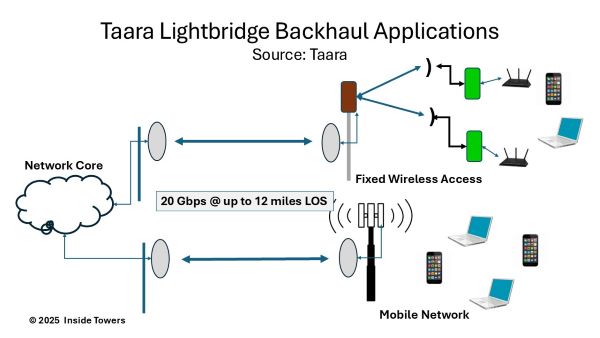What if mobile network operators or wireless internet service providers could utilize laser light beams instead of fiber cables for backhaul connections to cell sites or fixed wireless access base stations? This concept is at the core of the Taara Lightbridge, a wireless optical communication (WOC) system developed by Taara, an initiative originally from Alphabet’s (NASDAQ: GOOG) Google’s X innovation lab, which has now become an independent entity.
Taara’s WOC technology transmits data over invisible laser beams in the atmosphere, establishing ultra-fast point-to-point line-of-sight connections that eliminate the need for fiber optic cables. It employs a combination of mirrors, sensors, and precision optics to align and maintain the light beam, ensuring reliable data transmission.
The Lightbridge system is intended to offer connectivity in regions where laying fiber is impractical or cost-prohibitive, such as across rivers and in rugged terrains. With speeds reaching 20 Gbps over distances of approximately 12 miles, Taara aims to deliver high-speed connectivity to underserved and remote areas. In these scenarios, Taara asserts that its WOC technology presents distinct cost and time-to-market advantages compared to traditional fiber cable installations that are often used for MNO fiber-to-the-tower connections or microwave backhaul employed by WISPs serving less populated regions.
While laser-based communications technology has existed for many years, Taara claims its innovations have enhanced WOC viability by addressing key challenges such as weather-related disruptions. It states that its intelligent terminals use sensors and algorithms to continually adjust beam alignment in real-time, ensuring a stable and dependable connection. Still, Taara acknowledges that its laser beams require a direct line of sight between terminals and that weather conditions can occasionally affect performance.
A Taara WOC terminal is easy to mount on a tower, taking up little space and adding minimal wind load. It measures 8.7 inches wide, 9.4 inches deep, and 29.5 inches tall, and weighs about 29 pounds. The unit uses 40 watts of DC power.
“Taara works with internet service providers who distribute the bandwidth from Taara’s point to point links to individual homes, schools, and businesses,” the company tells Inside Towers. “The local ISP installs the access points if they distribute this bandwidth via WiFi – they can also distribute via last-mile wireless radio or fiber-to-the-premises.”
Taara has partnered with Bharti Airtel in India to connect remote villages and with T-Mobile (NASDAQ: TMUS) to link cell sites at events like Coachella and the Albuquerque Balloon Fiesta. Taara says it is looking for new telecom partners to help expand their networks cost-effectively.
By John Celentano, Inside Towers Business Editor





Reader Interactions